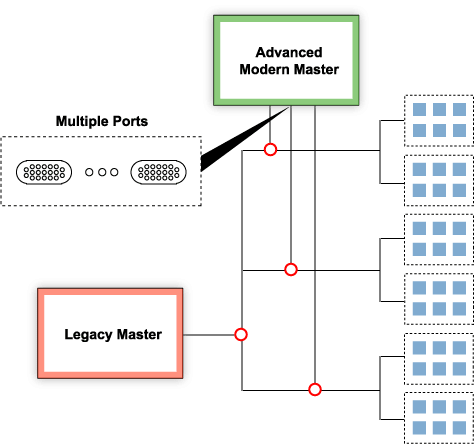Download our free Monitoring Fundamentals Tutorial.
An introduction to Monitoring Fundamentals strictly from the perspective of telecom network alarm management.
1-800-693-0351
Have a specific question? Ask our team of expert engineers and get a specific answer!
Sign up for the next DPS Factory Training!

Whether you're new to our equipment or you've used it for years, DPS factory training is the best way to get more from your monitoring.
Reserve Your Seat Today
Does your current master have enough I/O ports? Most legacy gear doesn't. Equipment built in the 1980s and 1990s simply wasn't designed for the hugely expanded networks of the 21st century.
Many network managers try to make the best use of their limited number of ports by bridging several polling legs onto one port. But this causes a new set of problems:
These problems are bad enough, but they are merely the visible effects of the root problem: the legacy master is slow and underpowered. Even if it weren't burdened with too much bridging, the system is still inadequate for your real monitoring needs.
The solution is to replace your under-ported legacy master with a new, modern master. The new master has an adequate number of ports, so you can add more polling legs and reduce the number of bridges between the master and the RTUs.
Optimized bridging can quadruple your polling speed. You'll see network threats as they happen, not after they happen.
Equally as important, the increased network diversity distributes your polling leg failure risk, creating a more fault-tolerant system. If an RTU goes bad it brings down only its local polling leg, not the entire network.
Above all, you'll have all the advantages of a new, modern master, including faster processing, more robust operation, after-hours monitoring, automatic notifications, nuisance alarm filtering, and full manufacturer support.